Examples of Asexual ReproductionNot every creature has two parents. Organisms can be produced from just one parent. For example, the Komodo dragon has just one mother and reproduces through parthenogenesis. The process of reproducing offspring without the involvement of any gametes or fusion of gametes is known as asexual reproduction. Asexual reproduction is different from sexual reproduction. This reproduction happens through a single organism. The offspring that are produced in this are genetically identical to their parents. As a result, a single individual organism reproduces without the involvement of another organism. Asexual reproduction is prevalent in living things and may take many different forms as described below: 1. Binary Fission in Bacteria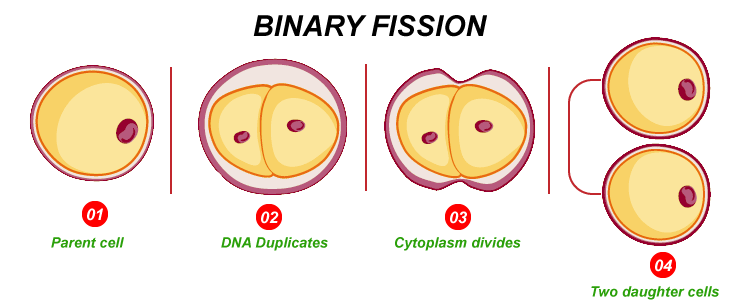
Many single-celled organisms use binary fission to reproduce. All bacteria use binary fission to reproduce. In optimal conditions, 100 bacteria may divide in a matter of hours to generate millions of bacterial cells. Most bacteria, on the other hand, do not thrive under optimum circumstances. If they did, the planet's whole surface would be covered with them in no time. Instead, limited resources, predators, and their wastes keep their reproduction under control. 2. Fragmentation in Blackworm and Star fish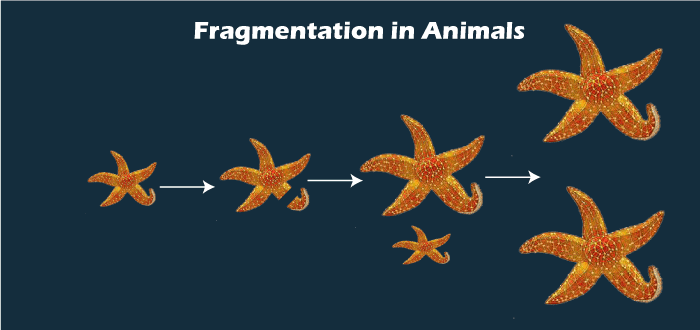
Many annelid (worm) species reproduce via fragmentation, which is an asexual process. California blackworms, sometimes known as mud worms, belong to this group of worms. These worms are sexually reproducible and hermaphroditic, meaning they have both male and female reproductive organs in the same body. However, these worms frequently reproduce through fragmentation. In this circumstance, blackworms can disintegrate, with each component becoming a new worm. Starfish, which develop from a single ray or arm, is also an example of fragmentation. Along with starfish, fragmentation reproduction is also common in some fungi and also in some low-level plants. Many of these species can reproduce sexually as well. Most lichens, which are formed when a fungus and photosynthetic algae or bacteria develop a symbiotic association, reproduce via fragmentation. This guarantees that both symbionts are present in new individuals. 3. Budding in Hydra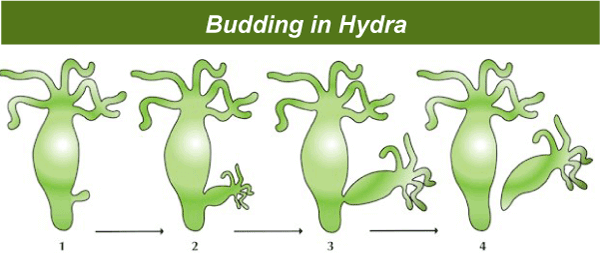
Hydras, like jellyfish, sea anemones, and corals, are freshwater cnidarians. Hydras reproduce asexually by producing small polyps that emerge from the parent and are genetically identical. In a process known as "budding," these polyps separate from their parent to become new creatures. 4. Parthenogenesis in Copperheads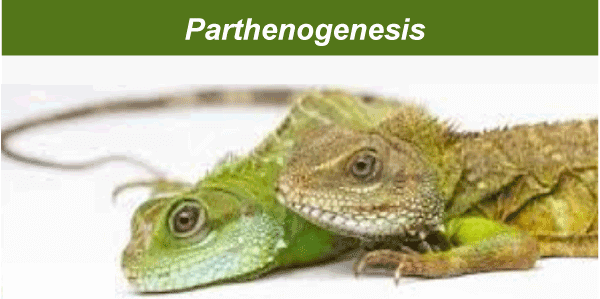
Any reproduction that does not include a male gamete is known as agamogenesis. Parthenogenesis and apomixis are two types of agamogenesis. Parthenogenesis is a type of asexual reproduction in which embryos grow and develop without being fertilized. Aphids, rotifers, nematodes, other invertebrates, and numerous plants and reptiles like the Komodo dragon naturally undergo parthenogenesis. Apomixis is asexual reproduction in plants that occurs without fertilization. Although invertebrates comprise most creatures that employ asexual reproduction, this reproduction is also seen in a few vertebrate species. Copperhead snakes are one example of such vertebrates which can reproduce asexually as an option to sexual reproduction. According to National Geographic, copperhead females may give birth to offspring without being inseminated by a male. They do this through a process termed parthenogenesis, which means "virgin birth." Parthenogenesis has been reported in various reptiles, birds, and sharks, with insects being the most prevalent. 5. Vegetative Reproduction in Strawberries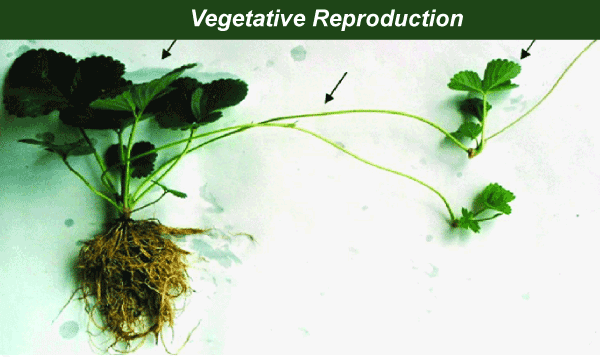
Many plants reproduce asexually by vegetative propagation, which can occur naturally without producing seeds or spores. In this process, Plant tissues and organs can regenerate from other parts of its body. In vegetative propagation, a new organism is identical to its parents. Strawberries multiply in this way in the wild. Strawberry runners, also known as stolon, are horizontal stems that extend from parent plants, and small plantlets sprout along with these runners, creating roots along the way. Plantlets form new independent creatures when the link to the parent plant is broken.
Next TopicTypes of Asexual Reproduction
|
 For Videos Join Our Youtube Channel: Join Now
For Videos Join Our Youtube Channel: Join Now
Feedback
- Send your Feedback to [email protected]
Help Others, Please Share









